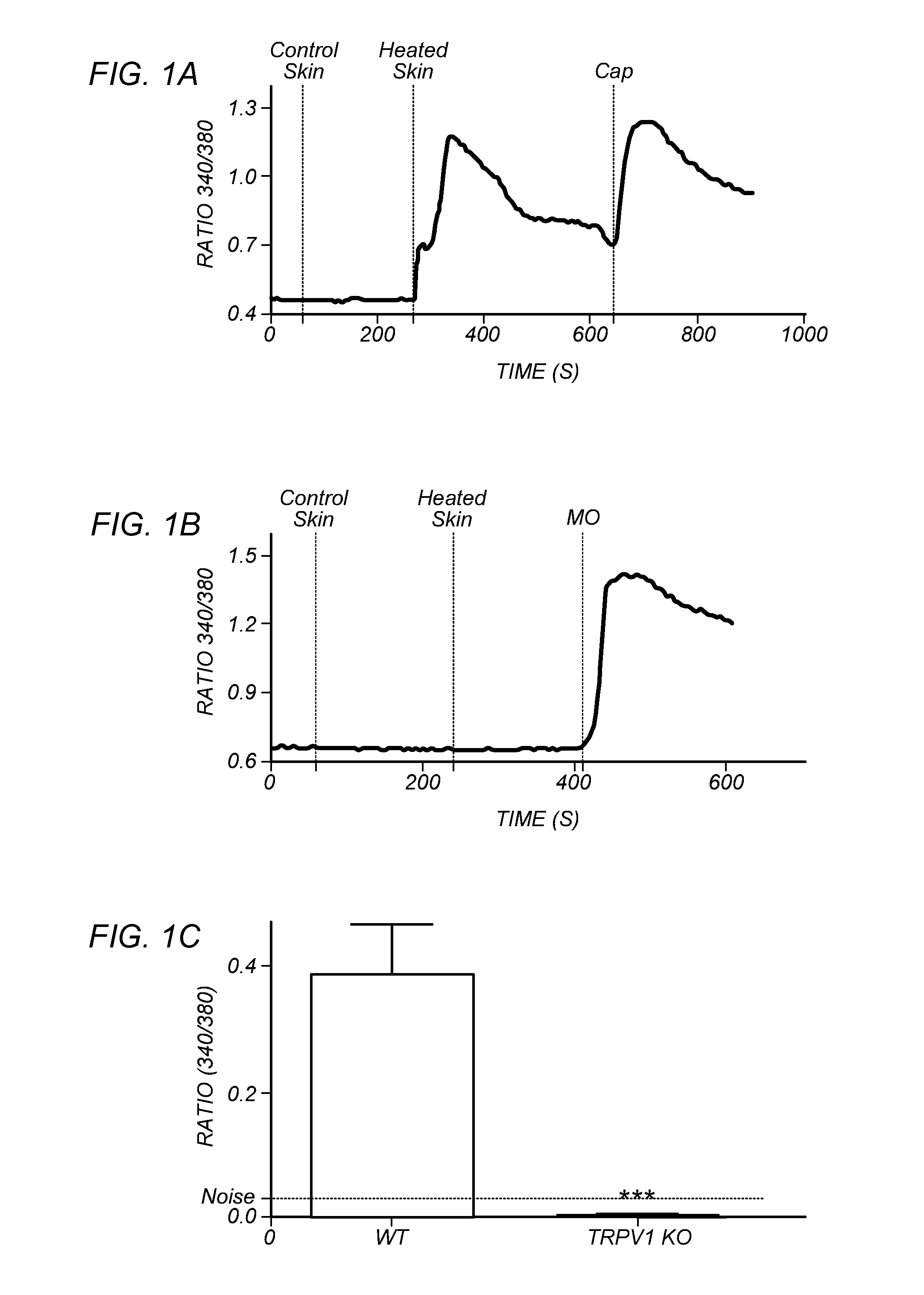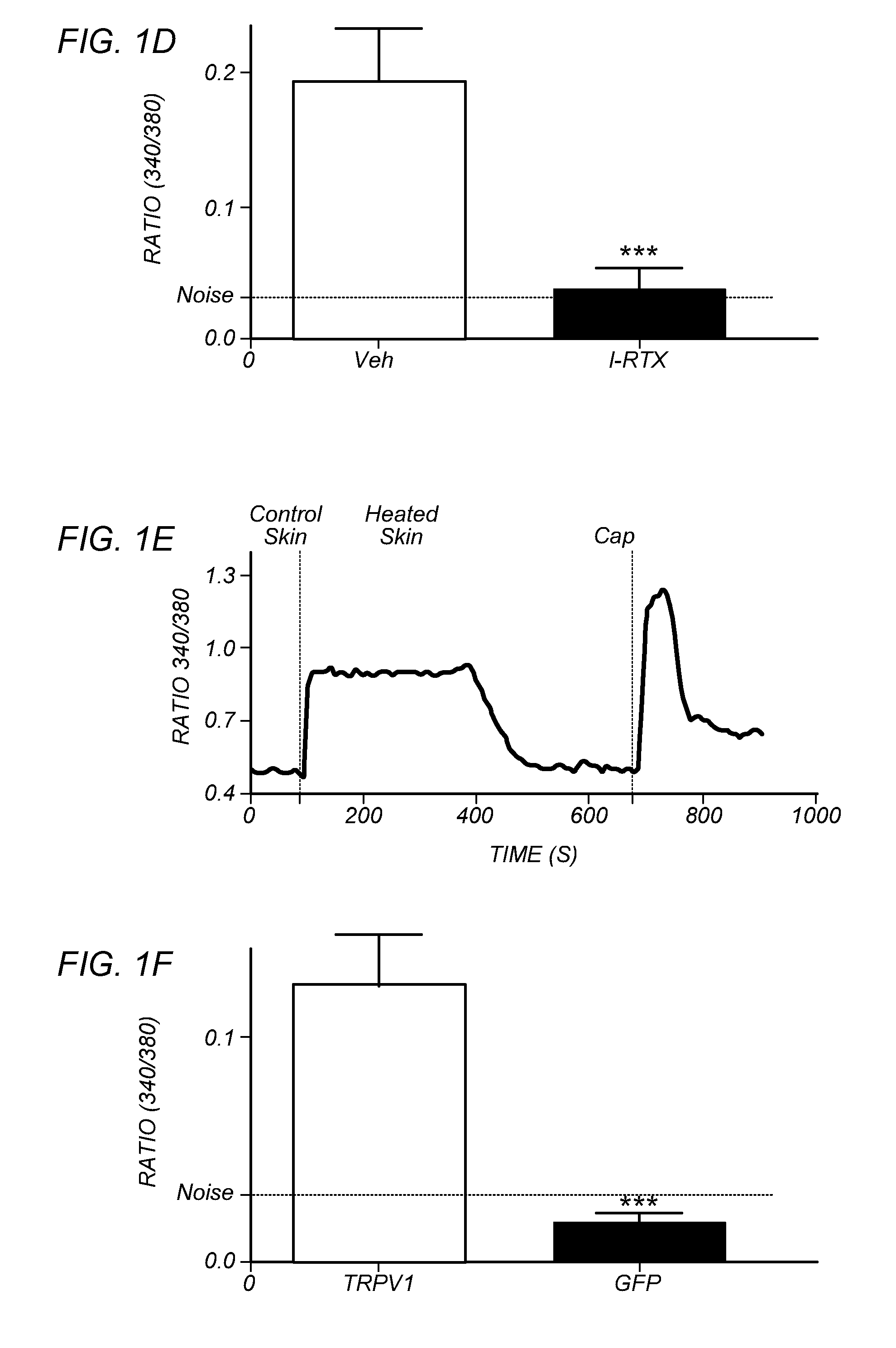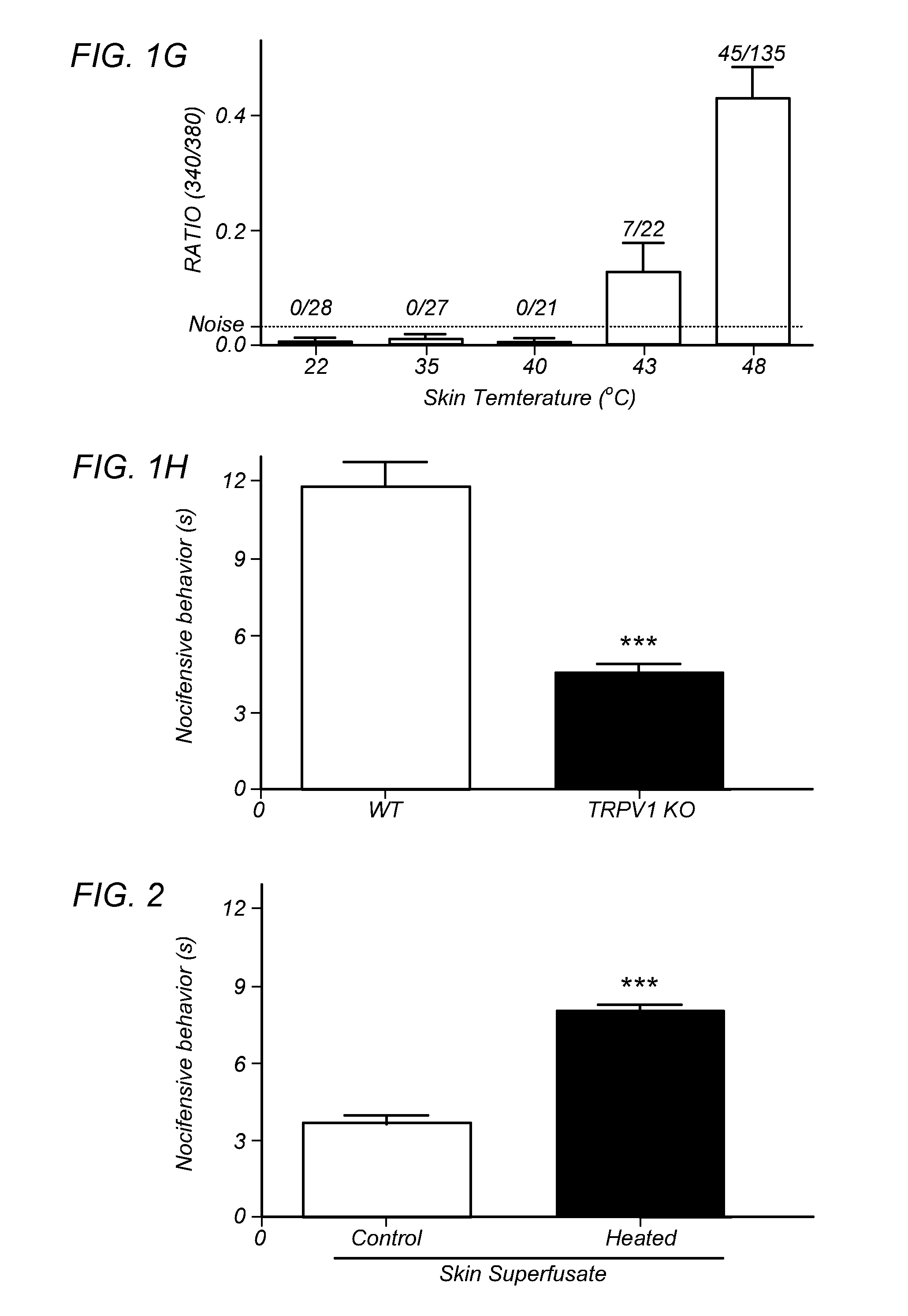Family of pain producing substances and methods to produce novel analgesic drugs
a pain producing substance and analgesic technology, applied in the field of treating pain, shock, and/or inflammatory conditions, can solve the problems of increasing the risk of long-term adverse effects, poor pain control in burn patients, and many pain conditions that are not managed by current analgesics, so as to reduce the catalytic effect of relevant metabolic enzymes and reduce the production of oxidized linoleic acid metabolites
- Summary
- Abstract
- Description
- Claims
- Application Information
AI Technical Summary
Benefits of technology
Problems solved by technology
Method used
Image
Examples
examples
[0099]FIGS. 1A-H depict that endogenous TRPV1 ligands are generated upon heat insult of mouse skin. The hypothesis of heat-evoked generation of endogenous TRPV1 ligand(s) was evaluated by harvesting mouse skin and then collecting superfusate samples after 20 min exposure to basal (37° C.=“control” skin) or noxious (48° C.=“heated” skin) temperatures. Aliquots of the two superfusates were applied, at room temperature, to cultured trigeminal ganglia (TG) neurons from wild type (WT) or TRPV1 knock out (TRPV1 KO) mice for measurement of evoked increases in intracellular calcium levels [Ca2+]i. In contrast to the supernatants collected from skin exposed to basal temperatures, the application of supernatants collected from heated skin demonstrated a rapid increase in [Ca2+]i, but only in those WT neurons that were also capsaicin-sensitive (FIG. 1A). Conversely, there were no changes in [Ca2+]i after application of supernatants from heated skin to either TRPV1 KO cultures (FIG. 1B; mustard...
PUM
| Property | Measurement | Unit |
|---|---|---|
| temperature | aaaaa | aaaaa |
| temperatures | aaaaa | aaaaa |
| temperatures | aaaaa | aaaaa |
Abstract
Description
Claims
Application Information
 Login to View More
Login to View More - R&D
- Intellectual Property
- Life Sciences
- Materials
- Tech Scout
- Unparalleled Data Quality
- Higher Quality Content
- 60% Fewer Hallucinations
Browse by: Latest US Patents, China's latest patents, Technical Efficacy Thesaurus, Application Domain, Technology Topic, Popular Technical Reports.
© 2025 PatSnap. All rights reserved.Legal|Privacy policy|Modern Slavery Act Transparency Statement|Sitemap|About US| Contact US: help@patsnap.com



